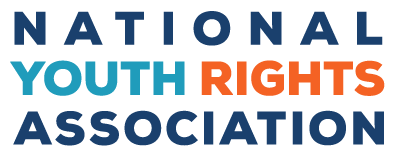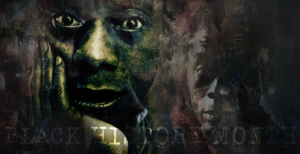Freedom of the press. Freedom of religion. Freedom of speech. These are some of the principles that America was built on. But lately, one of our basic freedoms that treasure has been under recent attack. Recently, the Supreme Court has restricted freedom of speech in public school under the Morse vs Frederick case. Frederick, a student at Juneau Douglas High School, was suspended from school for refusing to take down a banner stating “Bong Hits 4 Jesus”. The principal took disciplinary action against Frederick because of the message the banner conveyed to the student body of using illegal drugs. Frederick sued the principal,which has once again sparked a heated debate found in the majority opinion, concurring opinion and the dissent opinions of the justices of the Supreme Court on the free speech in public school.
Chief Justice Roberts wrote the majority opinion of the Supreme Court Case Morse vs Frederick. Within the context of the opinion, Justice Roberts rejects Frederick claim that this is not “a school speech case.” Roberts argues against this claim by stating that the banner was put up during a school approved social event or class trip. According to school district policy, “ approved social events and class trips are subjected to district rules for student conduct”.
Furthermore, Roberts brings the Tinker and the Fraser case to support his opinion in the current case. The Tinker case sets the precedent of, “ student expression may not be suppressed unless school official reasonable concluded that it will materially and substantially disrupt the work and discipline of the school.” Under this doctrine, Roberts felt that the principal had substantial reason to suppress Frederick right of free speech because it would be disruptive during the school event. But, Robert’s reasoning seems flaw on this point. It is hard to believe that a banner that states “Bong Hits 4 Jesus” can cause such chaos among the student body that it would impact the “work and discipline of the school”. In addition, there was no mention in any of the justices opinion of Frederick acting in any disruptive or chaotic manner that would rile up his fellow students.
Furthermore, Roberts uses the courts reasoning in the Fraser case to further support his reasoning. The Fraser case set the precedent that, “the constitutional rights of students in public school are not automatically coextensive with the rights of adults in other setting” because “in light of the special characteristics of school environment”. Schools have the responsibility of protecting students from harm and teaching students how to be productive citizens in society. In Justice Robert’s view, this is enough of a reason for the principal to restrict Frederick 1st Amendment rights because “congress has declared that part of a school’s job is educating students about the dangers of illegal drug use. The principal saw that the banner as a threat to the school’s drug education by promoting to students to use illegal drugs.
The precedent set by the Fraser case is clearly a violation of the Constitution. The vague reasoning in the Fraser case gives schools the full authority to be able to violate students constitutional rights for any purpose. Schools should not be have such authority unless, a pupil is directly harming another or infringing upon some else’s rights. Students should be able to express themselves no matter where they are, especially at school. This was not the case with Frederick. The principal had no right to violate Frederick’s 1st Amendment right of freedom of speech. Frederick was not directly harming any one around him or infringing upon anyone else’s Constitutional freedoms.
Furthermore, it is hard to believe that the banner hung by Frederick will make students use illegal drugs. Children are intelligent human beings with the capacity to reason. They are able to make informed decision with the education that they receive from schools about the consequences of drug use. In addition, those that choose to use drugs will do so with or without having Frederick’s banner up.
Moreover, Justice Thomas wrote a concurring opinion in support of Justice Roberts majority opinion. Within the context of the Justice Thomas opinion, it is clear that he holds a very conservative view on the subject of youth rights. Justice Thomas states, “ In light of the history of American public education, it cannot seriously be suggested that the First Amendment ‘freedom of speech’ encompasses a student’s right to speak in public school”. His reasoning for his argument is that history has showed that the purpose of public schools is strictly teaching the younger generation by having the youth be obedient to the teacher. He believes that allowing students to practice their 1st Amendment freedom will, “ undermine the traditional authority of teachers to maintain order in public schools”.
Thomas’ opinion reveals that he is not doing his job as a justice. The justice job is to uphold the laws embedded in the constitution for those that have violated them. Instead, throughout his opinion he just puts his point of view in his concurring opinion and completely disregards what the Constitution states. The Constitution does not put an age limit on an age that qualifies a person to have their freedoms. The main message of the Constitution is not to excluded anyone from their basic Constitutional rights, including children. In addition, schools should not restrict students freedom because then they will be teaching against the values that the we hold so dearly. Instead, schools should encourage their students to be able to practice their Constitutional rights because then their students can grow up to become wise, responsible, and productive citizen of society.
In contrast, Justice Stevens wrote the dissent, which was joined by Justice Souter and Justice Ginsburg. Justice Stevens does a good job defending Frederick’s right to express himself under the 1st Amendment. He states, “ in my judgment, the First Amendment protects student speech if the message itself neither violates a permissible rule nor expressly advocates conduct that is illegal and harmful to students”. He further states that, “this nonsense banner does neither, and the Court does serious violence to the First Amendment in upholding, – indeed lauding – a school’s decision to punish Frederick for expressing a view with which it disagreed”. Justice Stevens backs up his argument with the reasoning that Frederick’s intention for the banner was not to promote illegal conduct but to be seen on TV. Since he was not advocating any illegal conduct, hence his Constitutional rights should not be violated. Also, he proves that the principal only reason that she suppressed his freedom of speech was because she did not agree with Frederick’s point of view. He states: “the principal has unabashedly acknowledged that she disciplined Frederick because she disagreed with the pro – drug viewpoint she ascribed to the message on the banner”. Moreover, Justice Stevens acknowledges that it is ridiculous to think that a banner will influence students to partake in any illegal drug use.





